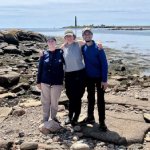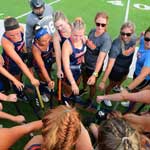
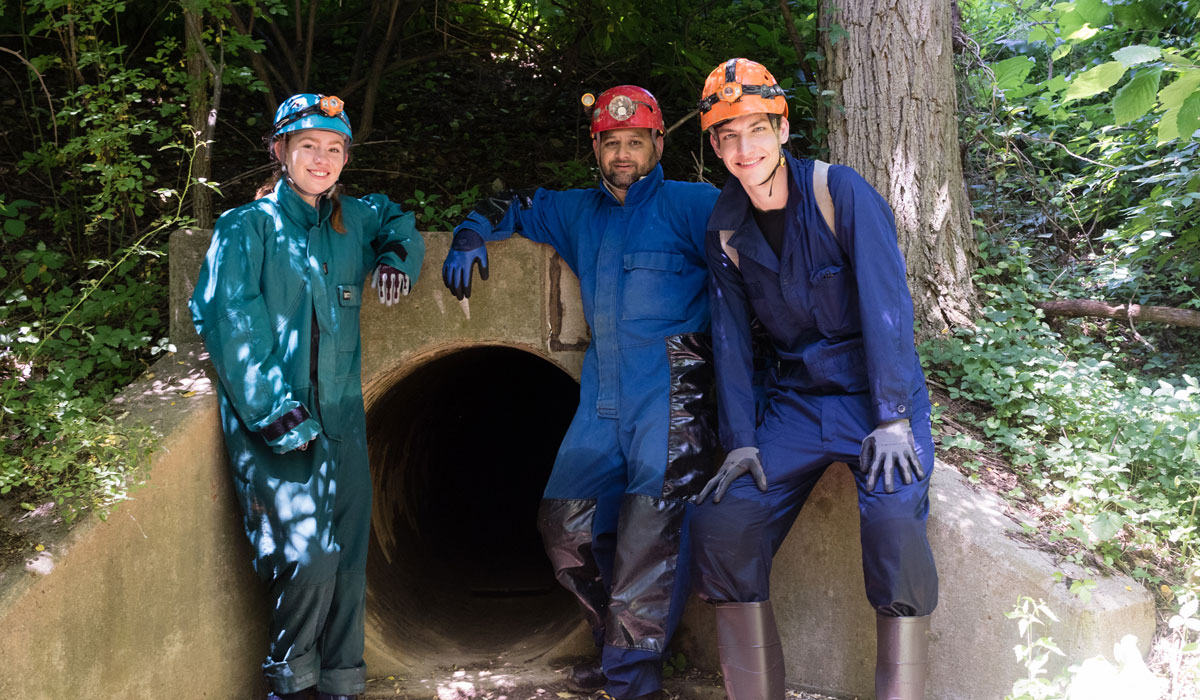
It’s a hot midsummer day when a Gettysburg professor and his two student research assistants get prepped in a parking lot. Cases are opened, waterproof bags are packed, lights are checked, helmets are fit snugly, coveralls are zipped upon layers of clothing and tucked into boots, and safety rules are reviewed.
They are about to embark on a journey underground as part of their summer research experience through the Cross-Disciplinary Science Institute (X-SIG) at Gettysburg College. This experiential learning opportunity requires grit, flexibility, a fair amount of bravery, and no aversions to mud or water. The cave environment is one-hundred percent humidity, with a temperature range of 49 to 55 degrees Fahrenheit, and there are areas where the team could be wading through waist deep water or higher.
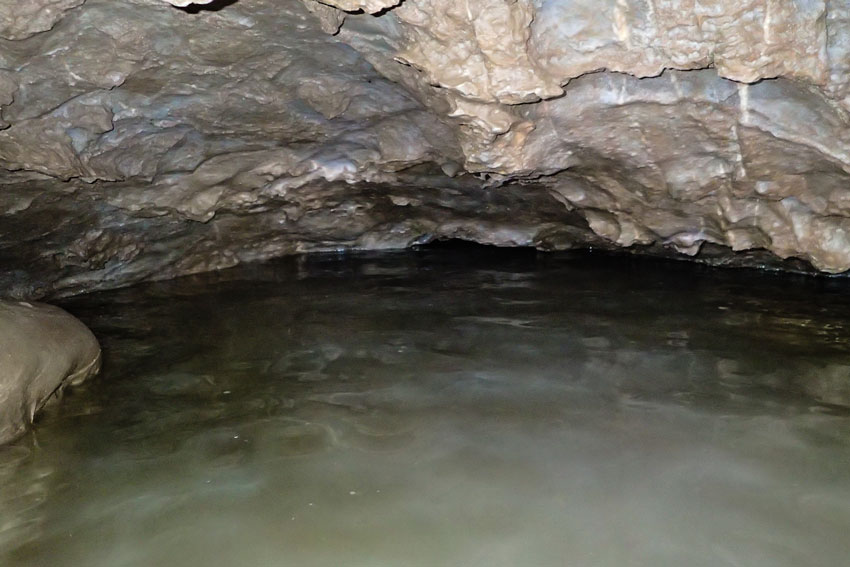
Working with Biology Prof. István Urcuyo to research and catalogue invertebrate lifeforms of Pennsylvania caves, Georgia Larzelere ’22 and Owen Skirtich ’20 are up for the challenge.
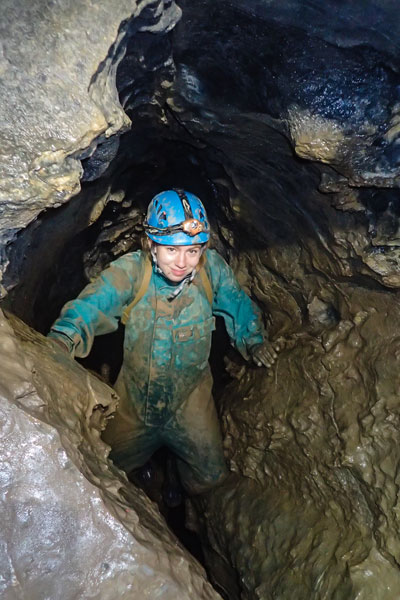 Urcuyo, an experienced caver, started caving as a form of stress relief when he was in graduate school. He has participated in multiple caving expeditions in the eastern United States and the Dominican Republic. Years later, he’s turned his hobby into a research experience for undergraduate students.
Urcuyo, an experienced caver, started caving as a form of stress relief when he was in graduate school. He has participated in multiple caving expeditions in the eastern United States and the Dominican Republic. Years later, he’s turned his hobby into a research experience for undergraduate students.
Skirtich and Larzelere were drawn to this particular X-SIG experience due to the intense amount of field work it required. Both students had minimal to no caving experience, but over the summer, they visited three caves at least two to three times to conduct the research.
“As a curious individual, I enjoy the feeling of adventure and exploring new environments,” said Skirtich. “What better way to go adventuring than through a dark, confined cave!”
Larzelere agreed. “I had never gone caving before, but I’ve been hiking and climbing and thought it would be a great experience,” she said. “Prof. Urcuyo was happy to teach us the proper caving techniques.”

As a biology major, Larzlere came into the project ready to learn about invertebrates and caving. Her goal was to find and photograph Collembola in the caves. “I’ve been doing individualized research on a hexapod called Collembola, which are tiny jumping organisms estimated to have 50,000 to 65,000 species worldwide,” she said.
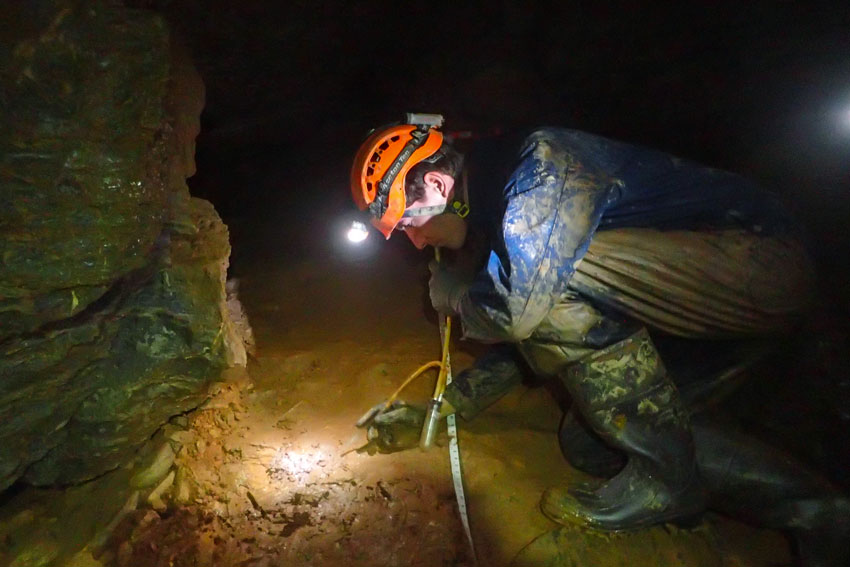
Skirtich is focusing his research on beetles under the order Coleoptera, which includes over 70,000 species. He found a specimen on his first caving trip.
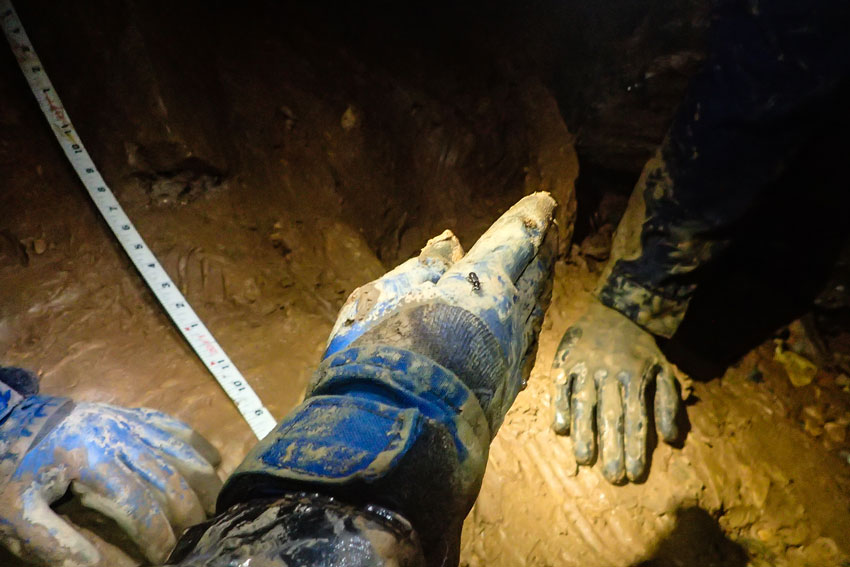
Larzelere and Skirtich are now working in Prof. Urcuyo’s lab to examine invertebrate life under a microscope and properly classify their findings.
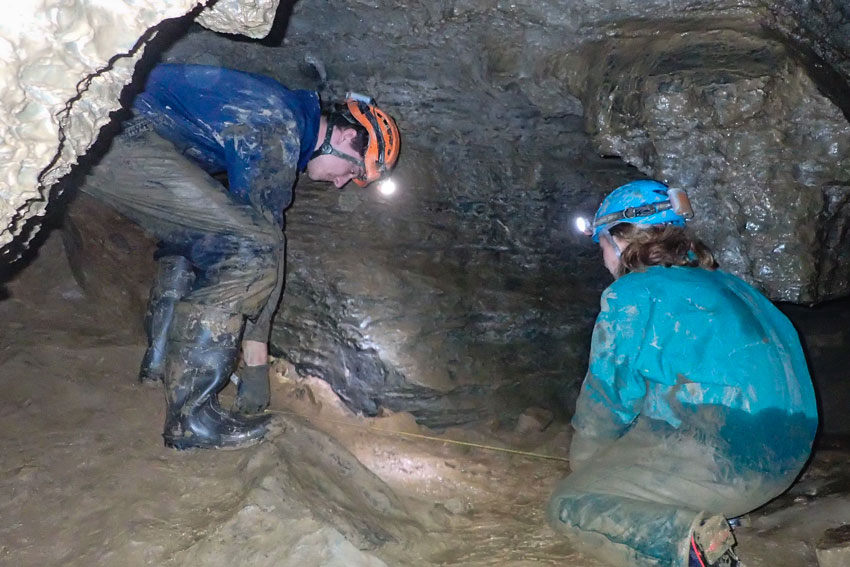
The benefits of the X-SIG program continue well beyond the summer, as Skirtich encapsulates: “The student-faculty mentoring part of the research is so important to me,” he said. “Being able to have a faculty member guide and show you what to expect prepares you for your future. I am grateful to have a mentor and advisor like Prof. Urcuyo.”
To learn more about their summer research experience and others, visit the X-SIG blog. Learn more about student-faculty research at Gettysburg College.

Article and photos by Shawna Sherrell
Posted: 10/02/19
